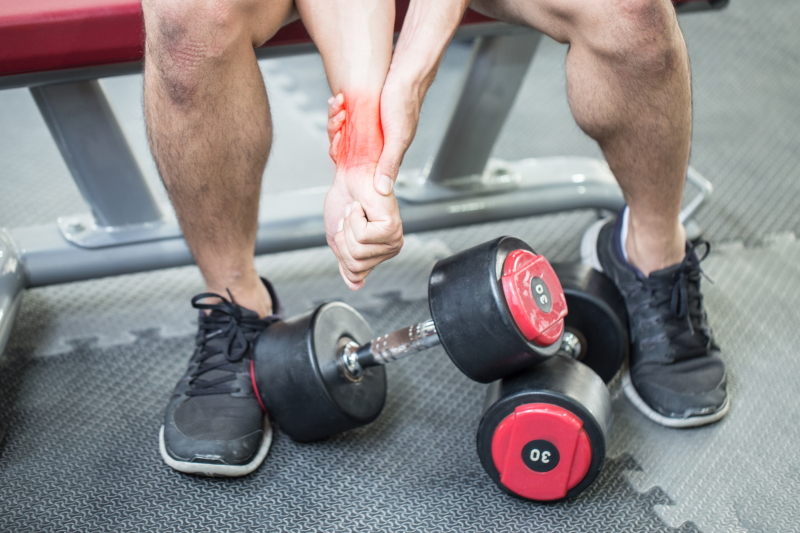A wrist sprain is a diagnosis we give to persistent wrist pain after a fall. There are many potential causes of wrist pain after injury, with a simple bruise or stretch of the ligaments being the most common cause. However, damage may occur to the important scapholunate ligament in some cases, leading to chronic pain. So, how do we diagnose a chronic scapholunate ligament tear, also known as SL ligament tear, and what do we do about it?
What is the scapholunate ligament?

The large and complex scapholunate ligament connects two essential bones in the wrist – the scaphoid and lunate. It consists of three ligaments – ventral, dorsal, and interosseous. The scapholunate ligament provides a support barrier for the bones and joints. Damage to this ligament leads to instability of the joints in the wrist and early osteoarthritis.
How is the scapholunate ligament injured?
Most cases of an SL ligament tear occur after a fall or trauma to the wrist. However, sometimes, injury can occur without trauma. For example, constant high load on the wrist from weight lifting or gymnastics can lead to tearing without trauma or a fall.
Diagnosis of SL ligament tear

Commonly, people report pain and swelling in the wrist following a fall or acute injury. Generally, pain continues despite rest and worsens with activities that load the wrist, such as weight lifting, tennis, or lifting heavy objects. Other complaints include clicking or weakness in the wrist.
Often, an assessment by your doctor reveals tenderness at the SL ligament on the top of the wrist. In addition, your doctor may perform specific tests to examine the stability of the wrist joints. An example of a particular test is Watson’s or Scaphoid shift test. However, only 20% of cases of scapholunate ligament tear have a positive Watson’s test.
An X-ray of the wrist is essential to examine how the wrist bones sit together. However, while a good-quality X-ray can detect a scapholunate ligament tear, most X-rays fail to pick up the tear. Usually, dynamic X-rays with a clenched fist will place more stress on the scapholunate ligament and increase the gap between the wrist bones. A gap of greater than 3mm is abnormal. Moreover, a high-powered 3T MRI can detect the extent of the scapholunate ligament tear and rule out other causes, such as a scaphoid fracture.
What about a scapholunate ligament ganglion cyst?
Frequently, a fall onto the wrist leads to a sprain or partial tear of the ligament. Over time, a fluid-filled cyst called a wrist ganglion can form over the ligament. We often call this cyst an SL ligament ganglion cyst. As the ganglion gets bigger, it can press on other structures and cause pain, particularly with the wrist’s movement. Generally, a scapholunate ligament ganglion cyst can be seen with an ultrasound or MRI scan.
How do we treat a scapholunate ligament tear?
Overall, treatment depends on the extent of injury to the ligament.
With partial tears, we suggest a wrist splint for four weeks, followed by hand therapy to improve the wrist’s strength and function. For complete tears, surgery to repair or reconstruct the ligament may be necessary.
In cases of a ganglion, aspirating the cyst using a needle and ultrasound is usually adequate. Injecting cortisone can stop the cyst from coming back.
Other Frequently Asked Questions about a Scapholunate Ligament Tear
Can a scapholunate ligament tear heal on its own?
Not usually. However, not all tears go on to develop problems. Partial tears generally do well with conservative measures.
Final word from Sportdoctorlondon about scapholunate ligament tear
Wrist sprains can be tricky to diagnose due to the complex wrist anatomy. It is essential to see a doctor to rule out serious problems such as a fracture or a chronic scapholunate ligament tear. Early detection in treatment is the key to stopping more damage.



Leave A Comment